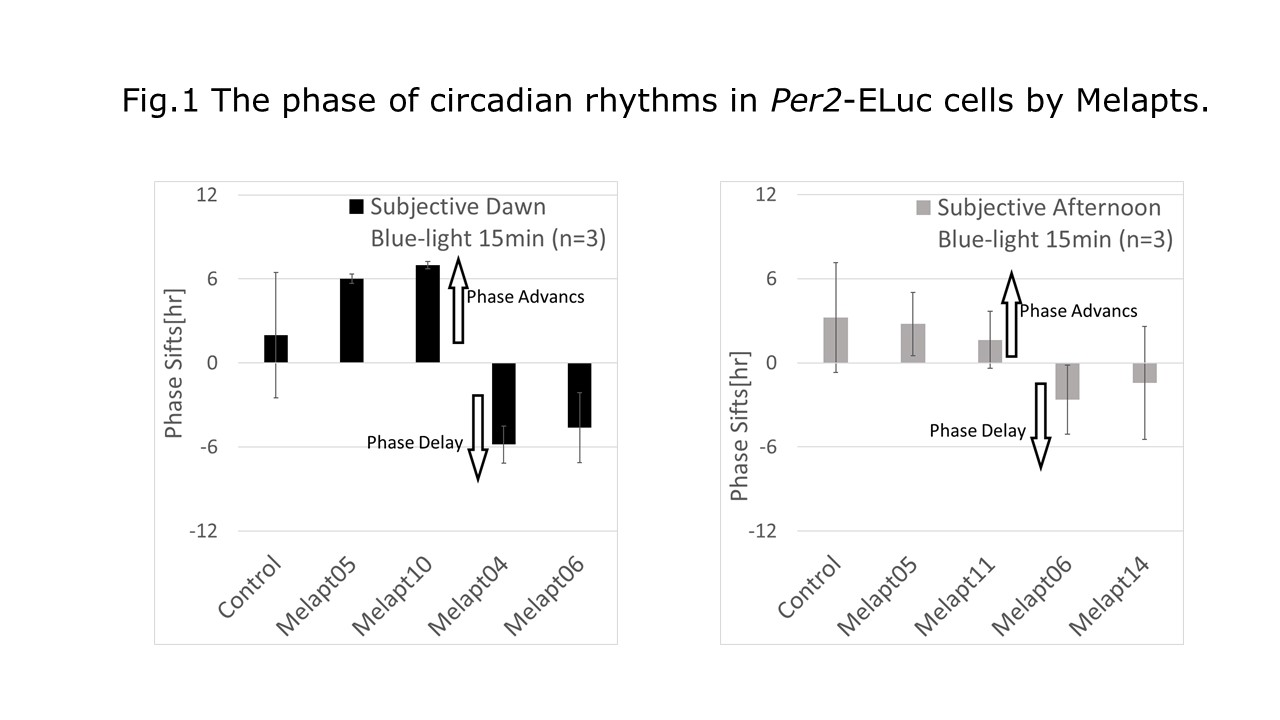In the COVID-19 pandemic, a lot of countries implemented lockdown policies to socially distancing. The European CBT-I Academy has issued a statement addressing this policy’s potential not to induce sleep disorders by increased stress and decreased afternoon activity. Getting high-quality sleep is an effective way to establish a daily rhythm and reduce to health risks. One of the most common causes of sleep disorders has been recently stayed up late at night and exposed to strong Blue-Light from smartphones and other devices. Blue-Light stimulates melanopsin (OPN4)(1), a photoreceptor in retinal cells, which projects directly to the Suprachiasmatic Nucleus (SCN), and results in a Phase Shift in the mammalian circadian rhythms. In this study, we screened DNA aptamers that specifically bind to OPN4 to regulate the phase of the central clock in one cell. The following experiments are committed to the policy of the Toyohashi University of Technology. As a result, we obtained 15 kinds of OPN4 (melanopsin) DNA aptamers (Melapts) by the Cell-SELEX methods(2). We performed a functional screening for the effect of Melapts on mammalian circadian rhythm by observing the phase shifts of Period2 (Per2)(3) gene expressional rhythms with 24 hours period. Circadian rhythms are driven by the transcriptional and trance rational feedback loop of the clock gene (Per2 and so on). We have the Per2-ELuc cell line, mouse fibroblast cells with Period2-promoter region followed by Emerald Luciferase (ELuc) from the Brazilian’ Pyrearinid beetle (Pyrearinus termitilluminans), expressed OPN4 stably on the cell membrane. OPN4-expressing Per2-ELuc cell(4) can be used to measure the phase shift of the single-cell clock after input of Melapt and light stimulation. Per2-ELuc cell line added Melapts and photo-stimulated by Blue-Light for 15 min at subjective dawn at the CT22 (Circadian Time 22) or subjective afternoon at the CT8 When photo stimulation at subjective dawn induces the Phase Advance, we obtained Melapt 05 and 10, making the clock phase more Phase-Advance. Melapt 04 and 06, which make the clock phase to Phase-Delay. On the other hand, when photo-stimulation at subjective afternoon induces the Phase-Delay, we obtained Melapt 06 and 14 for more Phase-Delay and Melapt 05 and 11 Phase-Advance. For example, it is supported that adding Melapts binds to OPN4 and inhibits transcription of the Per2 clock gene by photo stimulation at the CT8 afternoon when the transcriptional of the Per2 clock gene begins to decrease. The final effect of Melapt may result in either Phase-Advance (Melapt05,11) or Phase-Delay (Melapt06,14), depending on the timing of adding Melapt. This study suggests that Melapt 05 helps you wake up earlier in the morning, and Melapt 06 enables you to sleep earlier at night. These Melapts may help to shift the phase of circadian rhythms.
Physiology 2021 (2021) Proc Physiol Soc 48, OC68
Oral Communications: Regulation of phase reset mechanism in mammalian circadian rhythms by oligonucleotide therapeutics
Kazuo Nakazawa1
1 Toyohashi University of Technology, Toyohashi, Aichi, Japan
View other abstracts by:
Where applicable, experiments conform with Society ethical requirements.

